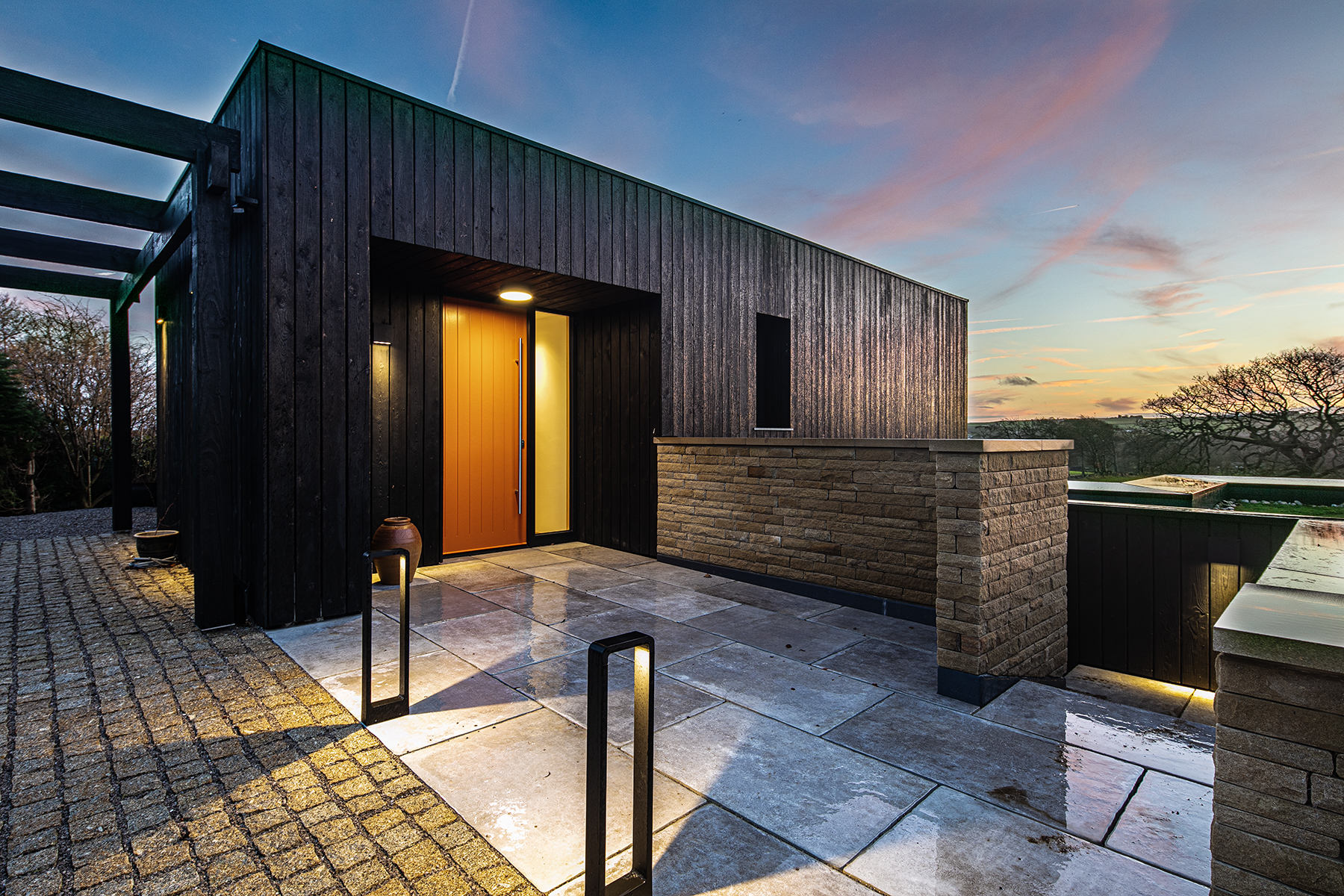
Great architectural photography is often about patience and timing. Choosing the best time for architectural photos is the most important decision a client can make. It’s crucial to understand the variables that determine the success of a shoot; rushing or, equally, procrastinating can seriously damage the final results. This article will help you decide when to organize your architectural photoshoot so your project makes the biggest impression.
I. The Optimal Moment: When a Building Looks its Best
Buildings, 9 times out of 10, look their best when they are shiny and new. However, they also look their worst when surrounded by a mud-filled building site, with pipework sticking out of the walls waiting for the final fittings.
You don’t want a building that is too new – for instance, if the smoke alarms are still covered in bright blue dust covers or the grass seed hasn’t sprouted yet. Preparation is key to ensuring the site is photo-ready before my camera ever leaves the bag.
II. Seasonal Impacts on Light and Mood
Seasonality is a huge factor in architectural photography.
In summer, strong, high sun creates dramatic shadows and harsh contrasts, which can make interiors difficult. This light is optimal for modern, bright interiors with large windows that rely on powerful natural light.
In winter, you get fantastic soft light that works well for interiors, especially those with smaller windows, dark finishes, or cottages. This soft light is excellent for subtlety and texture in internal spaces. However, be cautious of snow – it rarely looks like the picture postcard you imagine, often appearing as a slushy grey mess.
Trees and foliage also play a major role: some views are obscured by bright green leaves, which can cast heavy shade. Conversely, those same trees can hide an ugly neighboring property or car park, making them an advantage.
III. The Owner Factor: Hoarders or Interior Designers?
After the property has been returned to the owners, you need to be aware of what they will do to it – are they interior designers or hoarders?
- If you like their taste and feel they will enhance the property with their furniture, then maybe let them get the place sorted and finished before booking.
- If, on the other hand, you think they will fill a property with clutter and not look after the garden, then you better get the photographer in quick!
IV. Planning the Shoot Day: Following the Sun
The light can more often than not make or break a shoot. Whenever I am asked to shoot a property, the first thing I ask for is how long I can have on site and a plan with orientation. This is vital so I can find which elevation gets the sun and when.
- Avoid Shooting Towards the Sun: This rarely creates good shots.
- Maximize Time On Site: The 3-6 hours I’m normally at a property are spent following the sun, shooting each elevation and internal side periodically.
- Capture Variation: Often, I will shoot an elevation when the light is directly on the property, and a few hours later, the light will hit at an acute angle, creating long shadows that show the structure’s makeup in a very different way. The longer you have me on site, the more usable and variable the images will be.
V. Golden Hour: Sunrise, Sunset, and Weather
Shooting at sunset and sunrise will often give the best results, both externally and, especially with large glazed areas, internally.
- The light is softer with much more colour during these “golden hours.”
- The higher the sun, the more dramatic the shadows and harsher the look – this can work well for certain modern buildings.
- Overcast weather does not mean a negative result, but when the sky is very flat, external shots can be tricky. Rain and snow are usually a no-go for external work.
VI. Securing Access for Challenging Projects
During the COVID-19 pandemic, I was asked to shoot many buildings where clients had difficulty getting access due to health and safety or data protection.
- Schools and Offices: If your project is likely to have these issues (e.g., shooting a school while it’s empty), try to speak to the client in advance about getting access so it is agreed early on.
- Industrial Warehouses or Factories: The window to shoot these is tiny, as access is rare once keys are handed over. We might need to schedule the shoot for the last few hours before ownership is transferred.
- Communicate Early: Schools, offices, and residential buildings all have their own rhythms and timing constraints. It’s always best to talk it through with your photographer well in advance.
Final Thoughts: Timing is an Invisible Ingredient
Timing is fundamental to good architectural photography. It is what will make the images stand out and impress clients. Timing is an invisible ingredient needed to achieve the perfect result.
Working with a photographer is a partnership, always, and together you can achieve so much more. Speak to me or your photographer months before the project is ready so you both know the plans and what information is needed.
Get in touch – I am very happy to discuss any projects you have coming up and to offer any help with the planning of the photoshoot.


